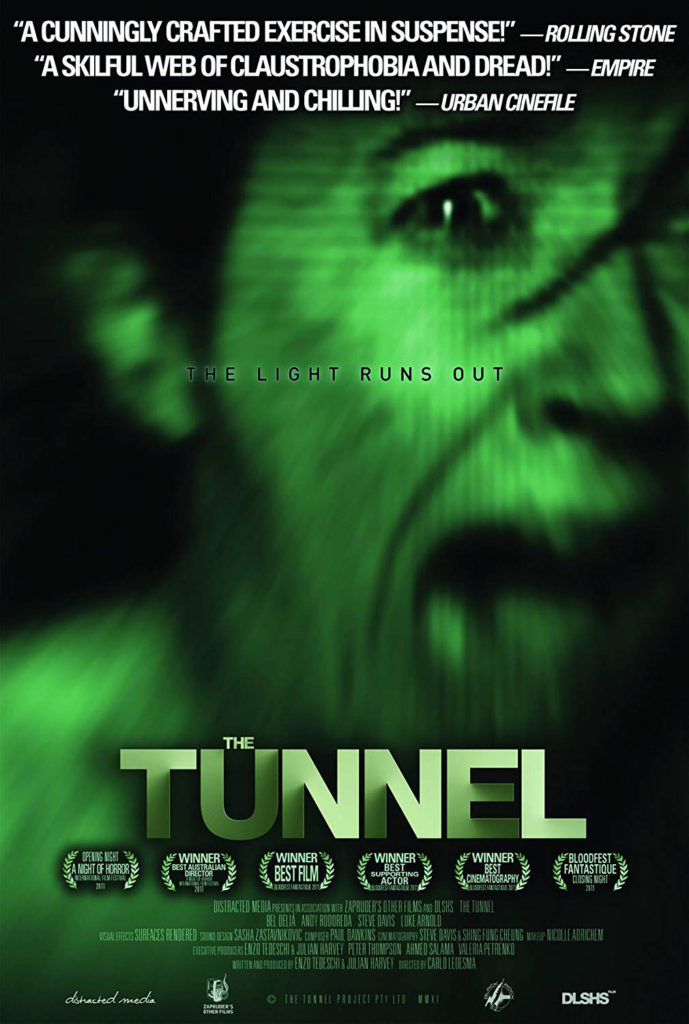What’s this? Another found footage horror film?! When will this menace stop? More importantly, when will I wise up and stop watching these things? All facetiousness aside, there are some films that use found footage effectively, some that don’t, and some whose plot actually requires it.
Grave Encounters might be the best example in the subgenre where found footage was necessary to the plot. Paranormal Activity is another film that used found footage in an effective manner, for the most part. And the same goes for the granddaddy (can I say that about a movie that is less than twenty years old?) of found footage horror, The Blair Witch Project.
At the other end of the spectrum are flicks that didn’t need the found footage aspect at all, or either had that aspect executed poorly enough throughout to be a distraction. I’m looking at you, Cloverfield, REC, its sequel and its remake, End of Watch, Apollo 18, and more that I can’t think of off the top of my head. Good movies can use found footage poorly, and vice versa. Found footage is a gimmick. As such, it’s difficult to implement successfully without damaging a film.
If a film can survive without using the found footage method, it probably should not have been made using found footage. Another caveat should be: if the character holding the camera is supposedly a professional cameraman, knock off the shaky  camera bullshit. Yet another caveat: don’t expect the audience to believe that a regular person with a camcorder is going to religiously record everything relevant that happens. This is the found footage equivalent of a novel supposedly being narrated by one of its characters in real time, a la Marlowe in Lord Jim (one of the best novels I’ve ever read, but still, no one stands in front of people and tells a story like that in such detail, ever).
camera bullshit. Yet another caveat: don’t expect the audience to believe that a regular person with a camcorder is going to religiously record everything relevant that happens. This is the found footage equivalent of a novel supposedly being narrated by one of its characters in real time, a la Marlowe in Lord Jim (one of the best novels I’ve ever read, but still, no one stands in front of people and tells a story like that in such detail, ever).
The Tunnel, from 2011, straddles the line between good use of found footage and unnecessary use.
The film tells the story of a four-member news crew in Sydney, Australia, who descend into some abandoned train tunnels and disused World War II bomb shelters chasing rumors that members of the underground homeless population have been disappearing. Unlike most other found footage films, The Tunnel includes interviews with characters after events have supposedly taken place. A little narration and an intro with a television journalist sitting on a high stool, and this film could have been mistaken for an episode of 60 Minutes or Dateline. That seemed to be the look and feel director Carlo Ledesma was going for. In that, he succeeded. I’m not totally convinced it was necessary to tell the story in that way. But, while the post-resolution interviews were a bit off, the actual footage of events was surprisingly good.
The film’s financing was probably responsible for the talking head interviews which ate up so much screen time. The Tunnel was a crowd-sourced film, with a target budget of 135,000 bucks. The filmmakers came up short by about 100k, which meant that if producers and screenwriters Julian Harvey and Enzo Tedeschi wanted to get the project done, they had to cut some corners. I suspect there may have been some guerilla filmmaking involved, as well, but this is all purely speculation.
The Tunnel keeps things very simple in its production, and suffers nothing from it. I have seen a load of b-movies that feature long segments that take place in a single, claustrophobic location that become exercises in utter tediousness. This film is not one of them. This is not some piece of crap commissioned by SyFy or something meant to be shown on Cinemax at three in the morning. The people who made The Tunnel cared about their project. They showed more than passing familiarity with storytelling, and were clearly, unfortunately, hampered by their budget.
But they also lucked out with the cast. The four principles, Bel Deliá as as Natasha, Andy Rodoreda as Peter, Steve Davis as Steve, and Luke Arnold as Tangles, all work well together. None of them were stellar, and a viewer will quickly get annoyed at hearing Tangles’ name, but they were competent. Competence in a performance cannot be underestimated. Competence is not synonymous with mediocrity. Competence means an audience can accept a character as being genuine. If every actor and actress in the world were merely competent, the list of shitty movies would shrink dramatically. Add to that the cast was forced to act in a film of such limited means and managed to maintain their enthusiasm and professionalism throughout, and I say good work, guys.
The film takes a while to pick up speed — almost half its running length — but once the main characters find themselves underground, it begins to move. Much of the last half is spent running around the same darkened hallways, evading a monster or some such. Despite the efforts of cast and crew, these scenes are very repetitive and very predictable. The sin finally lies with a scene near the climax that was shamelessly drawn from REC.
The Tunnel is creepy. It has a fair amount of scares, but not a lot of originality. So while I praise the film, I’m also mindful of its flaws. The most I can give it is: good effort. Keep making movies.
